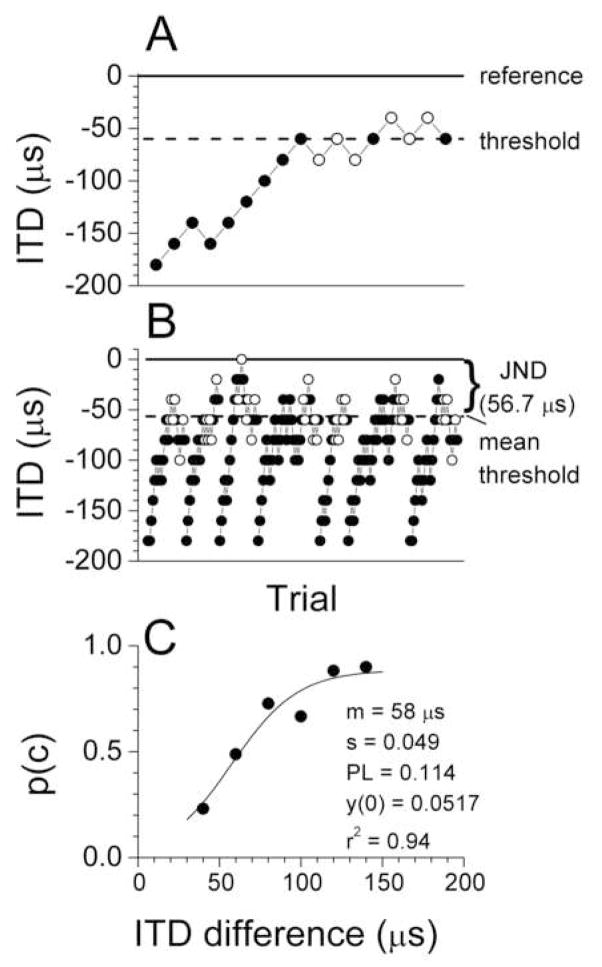Figure 1.
Examples of individual tracks used to determine the behavioral JND via a staircase tracking procedure. A. Example of a single track. The reference ITD was 0 μs. The last six reversals (open circles) were used to compute the threshold for the track (dashed line at 60 μs). B. All tracks used to compute the JND for this reference ITD. The JND (dashed line) for a given reference ITD was the difference between the reference ITD and the average of the thresholds (arrow), and in this case was 56 μs. C. The psychometric function derived from the tracks in B. The parameters of the function are given, including the midpoint of the function (m), the slope (s), the lapse (PL) the y-intercept (y(0)), and the percent variance accounted for (r2).

